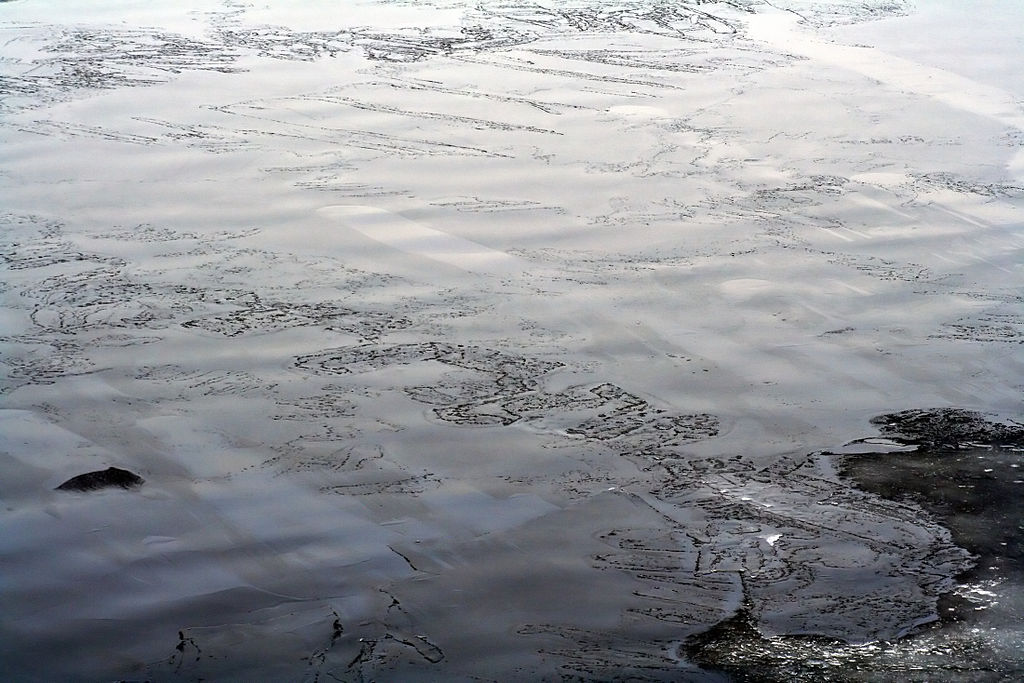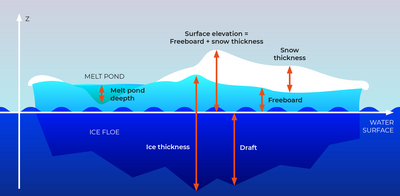Nilas sea ice 3
Autor/Urheber:
Attribution:
Das Bild ist mit 'Attribution Required' markiert, aber es wurden keine Informationen über die Attribution bereitgestellt. Vermutlich wurde bei Verwendung des MediaWiki-Templates für die CC-BY Lizenzen der Parameter für die Attribution weggelassen. Autoren und Urheber finden für die korrekte Verwendung der Templates hier ein Beispiel.
Shortlink:
Quelle:
Größe:
2200 x 1467 Pixel (812026 Bytes)
Beschreibung:
Nilas Sea Ice sea ice w:Baffin Bay w:Arctic.
In calm water, the first sea ice to form on the surface is a skim of separate crystals which initially are in the form of tiny discs, floating flat on the surface and of diameter less than 2-3 mm. Each disc has its c-axis vertical and grows outwards laterally. At a certain point such a disc shape becomes unstable, and the growing isolated crystals take on a hexagonal, stellar form, with long fragile arms stretching out over the surface. These crystals also have their c-axis vertical. The dendritic arms are very fragile, and soon break off, leaving a mixture of discs and arm fragments. With any kind of turbulence in the water, these fragments break up further into random-shaped small crystals which form a suspension of increasing density in the surface water, an ice type called frazil or grease ice. In quiet conditions the frazil crystals soon freeze together to form a continuous thin sheet of young ice; in its early stages, when it is still transparent, it is called nilas. When only a few centimetres thick this is transparent (dark nilas) but as the ice grows thicker the nilas takes on a grey and finally a white appearance. The image was taken from an w:icebreaker.
Lizenz:
Relevante Bilder
Relevante Artikel
MeereisAls Meereis bezeichnet man zu Eis gefrorenes Meerwasser. Meereis kommt außerhalb der Polargebiete saisonal unter anderem in der Ostsee, in skandinavischen Fjorden, im Sankt-Lorenz-Golf oder dem Ochotskischen Meer vor. Etwa 6,5 % der Weltmeere sind im Jahresmittel von Meereis bedeckt, das entspricht einer Fläche von 22,5 Millionen km2. .. weiterlesen

















